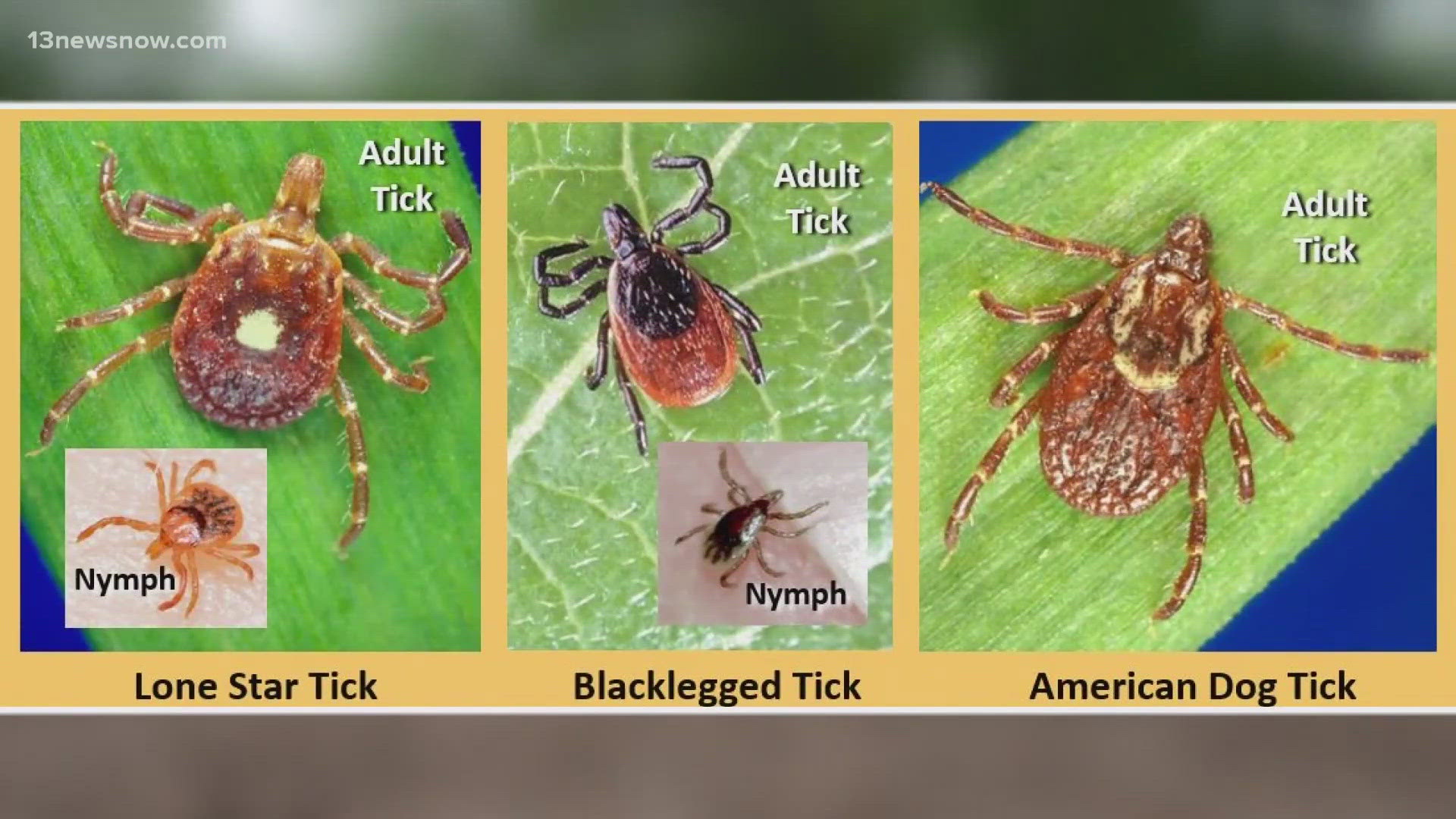NORFOLK, Va. — It is tick season in Virginia and the pests are coming for you.
According to the Virginia Department of Health, there are 16 species of ticks across the state. The most common ones are the Lone Star, Blacklegged, and the American Dog ticks.
They can be as small as a sesame seed.
"A lot of people are looking for something the size of a nail of their pinky, but they're actually smaller," said VDH Rabies and Vector-borne Disease Epidemiologist Joshua Bernick.
It's estimated one out of five ticks carries a disease. The sooner you remove one from your body, the better.
Bernick said the good news is the diseases aren't transmitted immediately. The bad news is ticks carry bacteria that can still lead to serious illness.
"Everybody knows Lyme disease. The same tick can transmit other diseases like anaplasmosis, which is a bacteria that invades red blood cells. It can transmit babesiosis, which is a very distant cousin of malaria."
After a bite, it usually takes a couple of weeks before symptoms appear. Most diseases are treatable.
The health department is asking residents to mail in ticks they find. Tweezers are the best way to remove a tick by grabbing onto the head as close to the skin as possible, and then place it in a Ziploc bag with alcohol.
"If you can identify the tick first, now you know what diseases you may have been exposed to. That way, you can communicate that with your physician," explained Bernick.
Sandy Sandoval walks his dog, Jax, at the dog park and regularly checks him for ticks. "Once we get home: checking his body, making sure that there are no ticks on there, especially [after] wooded areas or the park."
According to the health department, dog owners should examine their pets around their ears, eyelids, tail, between the toes, under the back legs, between their front legs, and under the collar.
Dogs like to wander exactly where ticks hide. "Ticks thrive on shade," said Bernick. "They like wooded areas, they like areas where they can hide. They're ambush predators."
People should examine in and around their hair, their ears, under the arms, inside the belly button, around the waist, between the legs, and the back of the knees.
Prevention is also key. A person can apply EPA-registered repellents like DEET, picaridin, or IR3535. Clothes can be sprayed with permethrin.
But what helps a human, can also be toxic to a dog.
"I always tell everyone to really take the time and talk to their vet because just like we have sensibilities, so do our animals," said Bernick, who recommends brushing your dog after they come in from outdoors.

